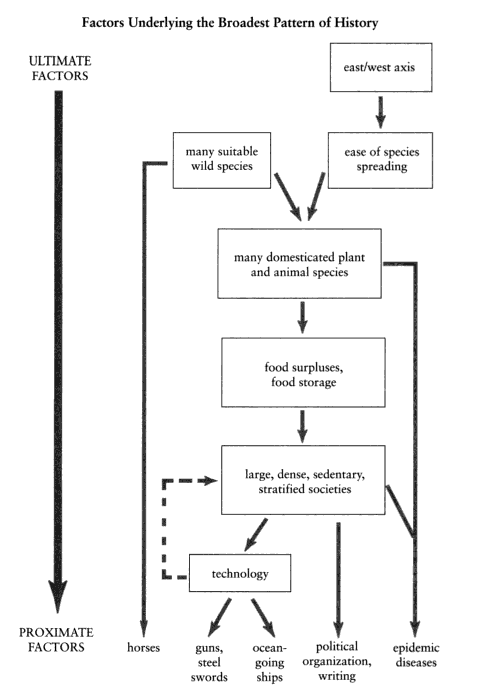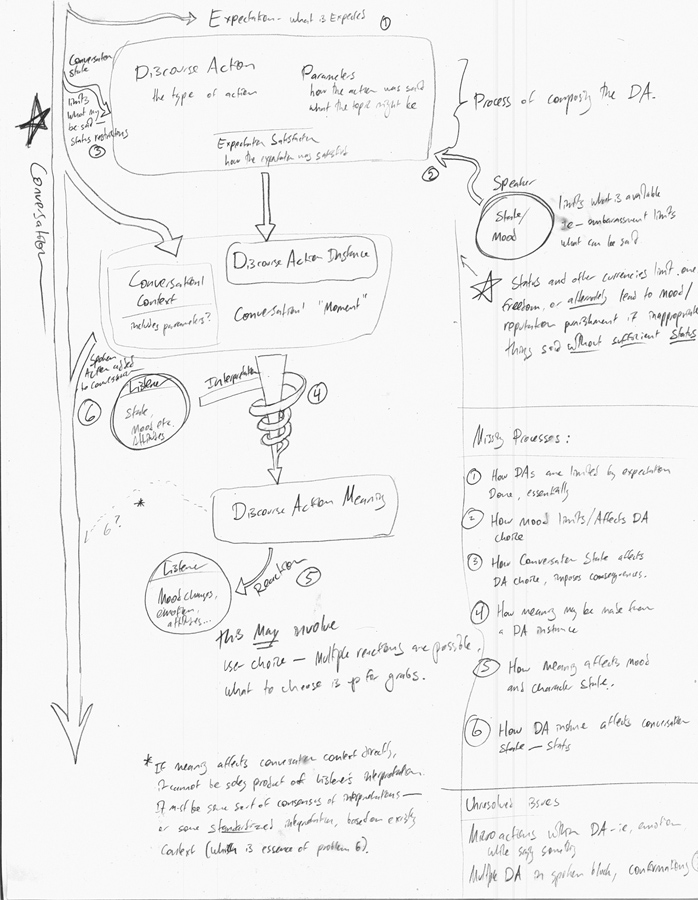Pride and Prejudice film adaptations
This actually contains not one but two analyses. The first is the 1940 adaptation starring Greer Garson and Laurence Olivier, and the second is the 2005 version with Kiera Knightley and Matthew Macfayeden. My notes for these are primarily my notes taken from the films directly. I have some analysis, but I don’t think I can post that right away. On the whole, I think that, by virtue of being films, both had to take significant steps to condense the complex narrative of the story, and thus they distinguish themselves by virtue of what they choose to include and what they focus on. I found the 1940 film to be dramatically estranged from both the literal events, as well as the values of the story world. It does however emphasize the elements of social class with some effectiveness. The 2005 film focuses predominantly on matters of public and private space, but also repurposes the story as a neogothic romance.
Most of my analysis is done in comparison between these and the 1995 BBC miniseries, which is the version I am the most familiar with. The visual language used in this is simply the most familiar to me. For the actual narrative events, I aim to make comparisons to the actual novel.
1940 film
Film opens with busy village scenes, there is an initially urban focus. Elizabeth comes across immediately as more dominant and presented as more attractive.
They have HUGE dresses.
The opening is a fabricated scene with introduction of Mrs. Bennett, Elizabeth, Jane at a clothing shop. Gossip and introduction of Bingley and Darcy occurs here. The calling on Bingley is posed as a contest between the Bennetts and the Lucases, who will make contact first. This contest results in a new fabricated scene where the two families engage in a carriage race. Wickham is also introduced right away in the village scene, speaking with Lydia, before they run off.
Conversation between Mr & Mrs Bennett occurs privately in Mr. Bennett’s study. A lot of the irony and negativity of Mr. Bennett’s statements seem to not be picked up- ie, sending daughters alone, having Mrs. Bennett go and be more charming, inviting Bingley to marry any of the daughters.
These scenes are all fabricated! Wickham is flirting with Elizabeth at Meryton Assembly. Her approach is to constantly play it coy. Darcy dances with Miss Bingley at Meryton Assembly. All the daughters and the mother are together awaiting arrival of Netherfield company.
The interaction is all much more dense in the assembly, a lot of the interactions are taking place in there.
Darcy seems to be more intermingled in the action, and is getting constantly suprised. The space presented in the film is much more open and interconnected. The slighting of Elizabeth and then the invitation to dance is immediate. The slighting focuses on the class of Elizabeth’s family, not her beauty. Elizabeth plays it submissive and coy, but effectively slights Darcy by immediately agreeing to dance with Wickham in Darcy’s presence.
Elizabeth’s visiting of Jane occurs spontaneously, there is no leadup to it. There is some reaction, but not a lot. Card scene and letter writing scene are merged together. Elizabeth moves to play cards after the reading. Mr and Mrs Hurst are absent, which makes the card room scene rather lonesome. The “resentful disposition” bit is absent. Elizabeth and Jane return to Longbourn without the embarrassing scene of Mrs. Bennett at Netherfield, but this is suggested in recollection.
It seems like most dialogue is conducted by interruption. Mr. Collins is Lady Catherine’s librarian. Collins character is that of a buffoon. Collins makes his selections of the daughters in the presence of the entire family. There is no direct mention of his silliness by reputation. He is described as being ostensibly ugly, though.
Netherfield ball is outside, gives opportunity to see soldiers and younger daughters being entertained. Collins chases Elizabeth, and Darcy helps her evade him. Elizabeth and Darcy play archery. It is here that there is another encounter between Elizabeh, Darcy, and Miss Bingley. She hints at the history between Darcy and Wickham at this point, but is all done indirectly and hypothetically. After this is Miss Bingley and Elizabeth have their sparring session, but it is focused on Wickham’s class. Elizabeth retorts to Miss Bingley with utter confidence.
Mary’s singing takes place at an interior scene, and is her singing with a backing band. This is interior and relatively out of the way. However, Mary’s singing was also hinted at earlier. Miss Bingley then insults Elizabeth on her family. Immediately after this, she becomes vulnerable and is supported and consoled by Darcy, but after this he is frightened off by her family. This make him seem much more flighty, ie, someone who offers friendship and then withdraws it.
The actions are much more theatric and kinetic, there is a lot more energy in gestures, that makes the interactions seem much more showy and spectacular. This is especially evident with the big poofy dresses, which exaggerate every action. This and the music lead to the film appearing as a comedy.
Collins proposal scene is centrally about his character, not Elizabeth’s. Elizabeth’s reasons for rejecting him seem much more about the undesirability of his character than her own. The pauses and interaction seem to be misplaced. Instead of Elizabeth needing to interrupt, Collins pauses for her noticeably. There is no mention of Elizabeth making Collins happy or vice versa. This is probably because Elizabeth does not have a character. I find this omission to be really startling because I think it the most important line in the entire proposal.
Wickham comes by after Darcy and Bingley leave, and he gives the rest of his story at that time. Collins and Charlotte Lucas then visit immediately afterward. There is a close interaction with Charlotte after, where Charlotte speaks some about the virtues of not knowing the faults of the husband. This is really the first that we’ve seen of Charlotte on husbands. Lady Catherine has a grave and serious air, she is scrutinizing and commanding. She seems to be much more cold to Collins’ compliments. She also seems much more actively interfering, actively attempting to unite Darcy and her daughter, attempting to separate Elizabeth and Darcy.
We do not see the scene where Elizabeth learns that Darcy was behind separating Jane and Bingley, but we do see Elizabeth return and relate that entirely to Charlotte. This is surprising, it make sense narratively, in terms of revealing information that needed to be cut, but it also betrays the information games played by the characters. To my knowledge in the novel, Elizabeth never tells Charlotte about that, as it is something that could be considered much more private.
Darcy’s proposal scene has him waiting for her, not his intrusion on her. He first maneuvers graciously, and we do not see as much of his frustration. All through the proposal scene, while listening, Elizabeth is still to the left of the screen, taking up more area, and maintaining dominance. But when referring to her sister, she bursts out crying for a moment. Immediately at this point, Darcy moves to be apologetic. They argue extensively, and he maneuvers to placate her at every gesture.
Elizabeth returns to Longbourn after her stay at Rosings, and is greeted by Jane, and this marks the point where Lydia and Wickham run off. This comes across as a total surprise, because we see none of the reflections about how Wickham’s character was first loved, nor do we see Darcy reveal the true nature of it. Collins visits and speaks the part of his rude letter, directly to Mrs. Bennett, which makes public the otherwise private communication. Darcy visits amidst all of this. There is no letter, rather he comes to intervene regarding Wickham, and he actively offers his services and tells the story about Georgiana.
After this, he leaves, Jane returns, and Elizabeth tells Jane about Darcy’s proposal, glowingly, and confesses that she actually loves Darcy. Both Jane and Elizabeth lament the loss of their respective loves. Jane describes how she dreams of Bingley. This is in contrast to her stated determination to forget Bingley. After this, we see Darcy, Bingley, and Miss Bingley, who are playing pool. Miss Bingley reads some letter and gloats over the Bennett’s misfortunes, to the distress of both Darcy and Bingley. Later, Mr. Bennett returns and the family is preparing to move and leave Longbourn. The news that Lydia and Wickham are about to return occurs immediately afterward and the two return in the next breath. Lady Catherine appears shortly thereafter.
The appearance of Lady Catherine occurs at a point where the house is at the most comedic of states, packed with people, full of things lying about in preparation of being moved, and with general confusion. At this point, Lady Catherine comes across as annoyed, but not as commanding. Elizabeth is cooler and calm. Their interaction is much more amicable, most of the statements are not fully conflicting. Lady Catherine poses an interesting dilemma, though, that she has the power to strip Darcy of his wealth should he and Elizabeth marry. This is presented not as a threat, but as a warning, and does not come off as something to stop Elizabeth in her tracks, but as something that she should be okay with before moving forward. Essentially, Lady Catherine is being deferential to Elizabeth. When Elizabeth denies that she expects to see Darcy again, Lady Catherine chides her for not realizing that Darcy is in love with her. It is this point where Lady Catherine comes across as a oddly supportive figure, in the next breath Lady Catherine explains that it was Darcy who made Wickham marry Lydia.
Right afterward, Lady Catherine meets Darcy, who is waiting in the carriage for her, for Lady Catherine to confirm that Elizabeth is there and is obstinate as ever. She then tells Darcy that Elizabeth is a perfect match for him because she will stand up to him. This structure poses Lady Catherine in an almost “fairy godmother” role which brings the two of them together. Darcy then supplicates and thanks her for her help and assistance.
Darcy and Elizabeth then watch as Bingley returns and speaks to Jane. Darcy then explains that Miss Bingley made Mr. Bingley return for the sake of his happiness. After this, we see Mr. and Mrs. Bennett watching to them. After this, they see Kitty and Mary flirting with two men in the drawing room, yielding the impression that all of the daughters will be married.
Some thoughts:
We see Elizabeth as a powerful character, not because anything she does, or because of her character, but because of how everyone around her acts. Cinematically, she is presented in a way that dominates the other characters. This occurs with visual presentation, with speech, with gesture, and the changes in text that make the others defer to her. We see occasional moments of sudden public vulnerability, which seems wholly out of place. At these moments, every other characters leap to console and placate her. I find that these moments detract from her strength as a character,
2005 film
Opening is environmental, we see Elizabeth walking through green field, reading. Conversation scene with Mr. Bennett and Mrs. Bennett occurs in privacy, but is spied upon by the daughters. Elizabeth is much more engaged with silly antics of her sisters. The revealing that Mr. Bennett gives of his calling on Bingley is given right after denial, as in 1940s version.
Ball scene is crowded, we get a good view of the diversity of classes participating in it. Elizabeth is much more engaged in chatting and engaging in gossipping.
When Bingley and company arrive, the entire room (music included) stops and the three (Bingley, Darcy, Miss Bingley) walk down hall. Afterwards, Mrs. Bennett approaches Mr. Bingley directly, which makes sense as ball scene is so crowded. Darcy is totally somber and silent. There are a few closeup shots of Darcy’s gaze, which shifts about elusively.
Bingley seems very impressed with Jane, and immediately shifts into friendly bumbling. Darcy’s slighting of Elizabeth occurs and appears to be as an excuse to further withdraw. He manages to stay back and look out grimly on the scene of the dance. Elizabeth manages to brush off the slight, but does not ostensibly tell anyone about it, other than Charlotte (who is with her at the time).
Jane’s beauty is discussed quickly, by Mrs. Bennett. This is described to Bingley and Darcy, and the discussion of poetry occurs in this encounter as well. At this point, Elizabeth uses the opportunity to reference Darcy’s slight to challenge him.
The discussion of the the dance (and the arrival of Jane’s invitation) occurs over breakfast. A few of the conversational points about the necessity of marriage occur during this point as well, as a noisy moment. The scene places the family as much more tightly interwoven with the servants, and the place as much more earthy and grounded, for lack of better terms. Jane’s arrival at Netherfield and her illness are swiftly elided, though the severity of Jane’s fever is presented as not all that significant. The father’s role in this seems fairly ineffectual, and his remarks about Jane dying is less biting. The father is additionally much less interested in the family affairs, and the mother is much less ridiculous.
Elizabeth is seen to simply walk toward Netherfield, and this is demonstrated as a surprise. There is no fear or any attempts to talk her out of it. At Netherfield, Bingley appears much more silly. The reading scene and the turn about the room again occur in the same scene. Miss Bingley is again biting, but in a quieter way. Introducing the turn around the room scene, Miss Bingley does not speak her request, but instead does so through touch.
Officers are introduced by a parade in Meryton, making much more evident their appearance in the neighborhood.
Throughout, the cutting is quick, and moves form one place to another, but does so in such a way as to indicate more passage of time. Mr. Collins arrival is presented suddenly, though, and we have very little forewarning of his character. He simply appears, first at the door, and then at dinner, and is met with somewhat hostile looks. He appears much more interested in financial and status matters right from the bat. There is less general apologies, he seems to take himself much more seriously and gravely. Instead of delivering his lines as though he thinks he were paying compliments, he delivers them in total deadpan. His slighting is cold and distant, rather than silly.
In town, Wickham is presented congenially, is immediately friendly and charming, and quickly invites the daughters to go shopping. Wickham explains himself after meeting Darcy, and he and Elizabeth discuss this in the middle of a grove. Wickham is presented friendly and gently.
The private ball at Netherfield is also crowded. We see Darcy following Elizabeth around a little bit in the shadows. During first dance, Collins talks to and stares intently at Elizabeth, but Elizabeth talks to Charlotte Lucas. Darcy proposal to dance is very sudden. The conversation with Dance is emphasized to be especially awkward. During the conversation with Darcy where she discusses Wickham, the staging removes the other characters giving a sense of Elizabeth’s self driven isolation, and the camera moves in a disorienting manner. Following the dance, a number of quick scenes occur: Collins’ approaching Darcy occurs (revealing how much shorter Collins is in comparison to Darcy), Miss Bingley makes an ominous (but not especially rude) comment to Elizabeth, Mr. Bennett silences Mary singing (without Elizabeth’s request), and we see Mrs. Bennett gossiping about potential marriages. After this, Elizabeth and Charlotte Lucas talk about how Jane should be more revealing of her desire.
During the outro of the ball, there is a panorama of the people within the ball, ultimately revealing Elizabeth hiding in the dark. This suggests a conflict between public and private space as a central theme within the film. When the family finally leaves Netherfield, it appears to be very early morning, just before the sun rises.
Leading up to the Collins proposal, Collins approaches requesting private audience with Elizabeth while the family is having breakfast. This results in a rather dramatic scene wherein the entire family is removed from the dining room. This involves a painful scene where Mr. Bennet leaves Elizabeth despite her asking him to stay. The declining of the proposal is quickly and forceful. Afterwards, Elizabeth runs out of the house. What is most striking about the proposal is Collins’ utter passionlessness in the entire matter. He seems to view it as primarily a political alliance, not as something due to any thoughts or feelings, genuine or otherwise. The encounter between Mr and Mrs Bennett and Elizabeth occurs outside, and Mrs. Bennett’s protests also seem primarily financial in nature. Elizabeth refuses seemingly on grounds that she doesn’t want to marry him, and protests the thought that she might be forced.
Like the 1940s version, Jane receives the letter of Mr. Bingley’s departure from Netherfield immediately after she returns to the house. Jane’s departure to London is given as basically Elizabeth’s idea. After she leaves, Charlotte returns and tells Jane personally the news of her engagement with Collins. This encounter is focused on Charlotte’s necessity to marry, as she cannot afford to be romantic (unlike Elizabeth). Charlotte leaves protesting that Elizabeth not judge her for her choice to marry Collins, citing how she is a burden on her family. This again touches on the theme of individualism. After this, there is a scene suggesting the passage of time, where Elizabeth sits on this swing and going around sees a yard at different stages of time. Finally, we get a voiceover of Charlotte’s letter inviting Elizabeth to visit her.
Lady Catherine is in a very opulent environment, but is rather quiet. She is gray haired and reserved. The camera positioning gives her an air of authority. Quickly afterward Darcy appears. The drawing room conversation occurs during dinner, during which everyone appears to be having soup, and maneuvers their spoons in synchrony. Lady Catherine is very grave and serious. She seems to maintain dominance over the scenes as a full voice of cold authority.
The scene while Elizabeth plays piano and chides Darcy occurs mostly in private, and her suggestion that Darcy practice conversing with others is quiet and between the two of them.
Fitzwilliam’s revealing of Darcy’s role in Jane’s removal from Bingley occurs during a church scene with Mr. Collins giving the sermon. There are meaningful interchanges of gaze from Elizabeth to Darcy. The scene afterward features Elizabeth running along across a stone bridge in the rain, and Darcy finally approaches her while she is standing in some building with columns. This gives a further push in the direction of Gothic romance. The actual proposal takes place with utter surprise outside in the rain. On Elizabeth’s rejection of Dary’s proposal, he first asks if Elizabeth is laughing at him. The two argue, again, first about the genuine nature of Jane’s affection, and then about Wickham. The interaction degenerates into shouting very quickly. Much of what was communicated in Darcy’s letter is moved into this argument. Toward its conclusion, Darcy moves closer and closer, until they finally appear right up next to each other.
The scene following contains Elizabeth moving with some gloominess and confusion throughout the house at Hunsford, illustrating passage of time and suggesting that Elizabeth remains withdrawn, not doing anything. Finally, Darcy appears to her, out of the shadows, inside, and leaves his letter. This appearance makes him seem almost like a ghost, a gesture that pushes this again in the Gothic tradition.
Elizabeth returns to Longbourn and meets Jane. Jane describes her rejection of Bingley. Asking what news, Elizabeth says that she did not hear anything (unlike the 1940s version) keeps quiet about both Darcy’s proposal and his role in separating Jane from Wickham. She keeps quiet about this even when the two talk at night, Elizabeth denies hearing Darcy talk about Bingley, but cries privately while doing so.
The Gardiners bring Elizabeth to Darbyshire, giving a great panorama of the area, and the grandness of nature. Afterwards, they recline in the woods, and decide to visit Pemberley. On visiting the house, Elizabeth surveys this collection of marble sculptures, which are all quite sensual. Elizabeth’s response to these is of this fascination and awakening awe and wonder. Losing her relatives and the housekeeper, she walks out and explores some of the rooms of the house alone. While this occurs, she hears piano music from another room, and finds Georgiana, as well as Darcy. Darcy appears, hugs his sister, and then catches Elizabeth’s gaze spying on them. The profound embarrassment of the situation is reflected on Elizabeth’s side, but less on the part of Darcy. He seems earnestly helpful, eager, and fascinated, but the encounter is brief.
Afterwards, we see Elizabeth returning to the inn at Lambton, where the Gardiners relay Darcy’s invitation. His conversing with the Gardiners occurs during this encounter as well. Afterwards, the next evening, Elizabeth gets the letter from Jane, but this is revealed suddenly, via Elizabeth’s reaction. Darcy and the Gardiner’s are present as Elizabeth makes the announcement. Darcy leaves quickly, but first after asserting his blame. The Gardiners then encourage the return to Longbourn.
Back home, Mrs. Bennett’s fear and anxiety is much more consistent, focusing on her loss and fear. There is none of the vacillating between distress and talk of wedding dresses. Throughout this, Mrs. Bennett appears much more sympathetic. Mr. Bennett returns, and as he does so, the letter from Mr. Gardiner arrives asserting the finding and engagement of Lydia and Wickham.
Wickham’s arrival is friendly and more somewhat amicable. Lydia’s mentioning of Darcy appears at dinner, publicly. The entire encounter between when Lydia arrives and when she departs is very quick. There is some gesture of the coldness between Wickham and Mr. Bennett, but not very much.
When Mr. Bingley and Mr. Darcy arrive, there is a mad scramble for the mother and daughters to get the sitting room in shape. When the actual men arrive, they are present with utmost awkwardness. Afterward, there is an encounter between Darcy and Bingley, as Bingley practices his proposal with Darcy. he returns to the sitting room at the house right afterward, and makes a bold request to request Jane’s company immediately thereafter. We then see the beginnings of his proposal. During this time, the entire family eavesdrops in (echoing the beginning).
Afterwards, we see Darcy walk away from the house in a sense of distant melancholy. Then there is a pan by of several of the rooms of the house from the outside. There is a view of the parents talking with some degree of happiness and amicability. After we see Jane and Elizabeth talking, in the middle of the night, Lady Catherine visits.
They talk in the drawing room. The scene gives Lady Catherine dominance and command within the encounter. The point where Lady Catherine tells Elizabeth about her supposed engagement with Darcy, there is a subtle vertigo, suggesting that Elizabeth realizes suddenly what might be taking place. Lady Catherine’s power is emphasized by severe closeups on her face. Elizabeth’s response is quiet, but strong, finally she verbally forces Lady Catherine out. The family, again, eavesdrops on the encounter. When it ends, they move to inquire as to what it is about, but Elizabeth shouts at them to leave her alone (for once in her life).
Next morning, Elizabeth stalks through the heath before sunrise. Darcy emerges from the mist as she is walking by, and approaches her. They immediately get to the point that it was Darcy who helped Lydia and Jane. Darcy professes his love rather emphatically. Elizabeth responds by moving forward and touching his hand (remarking that it is cold; there have been a lot of shots of his hand), and the camera zooms in on the two of them approaching to kiss as the sun rises behind them.
Darcy visits Mr. Bennett personally to profess his intentions, and Elizabeth steps in after Darcy steps out. During this conversation, Elizabeth tells her father of Darcy’s amends to the family. The encounter is very emotional (he gets red in his eyes) and reveals some of the father’s breaking distance. I think that one of the suggestions is that underneath the layers of withdrawal and distance, that the characters are still emotionally warm inside.
Some general notes:
The gothic connection is actually quite strong, as the gothic romances usually involve the opening up of the female protagonist through the exploration of a historical and narrative environment, and this is given here as very naturally focused. When she hears the good news, Mrs. Bennett’s joy seems much more to be genuine relief, but is also subdued.
| Author/Editor | Film |
| Title | Pride and Prejudice |
| Type | book |
| Context | |
| Tags | fiction, settings, media traditions, specials |
| Lookup | Google Scholar, Google Books, Amazon |







